Different effects of bromodeoxyuridine and [3H]thymidine incorporation into DNA on cell proliferation, position, and fate
- PMID: 22016554
- PMCID: PMC3225276
- DOI: 10.1523/JNEUROSCI.3092-11.2011
Different effects of bromodeoxyuridine and [3H]thymidine incorporation into DNA on cell proliferation, position, and fate
Abstract
As markers of DNA synthesis, [(3)H]thymidine ([(3)H]dT) and the later developed analog bromodeoxyuridine (BrdU) have revolutionized our ability to identify dividing cells and follow their fate in various tissues, including the nervous system. However, the effect of the incorporation of these molecules into DNA on cell proliferation, migration, differentiation, and function is not fully understood. Here, we compare the number and distribution of labeled cells in the cerebral cortex of postnatal macaque monkeys exposed to either [(3)H]dT or BrdU as embryos. The large size and prolonged brain development in this species allows higher resolution of cellular events and more accurate discrimination between the two methods. Our analysis revealed substantial differences in the number and distribution of labeled cells. The data indicate that random incorporation of the thymidine analog BrdU into the genes of dividing cells makes the fate of postmitotic neurons more prone to unpredictable errors than the incorporation of the more natural DNA constituent nucleotide [(3)H]dT. These findings have implications for the interpretation of results obtained by BrdU as an index of the number of neurons produced, and their migration, placement, subsequent connectivity, function, and survival.
Figures

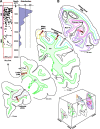
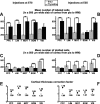
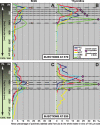
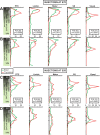
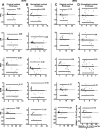
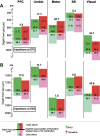
Similar articles
-
Systematic differences in time of cerebellar-neuron origin derived from bromodeoxyuridine immunoperoxidase staining protocols and tritiated thymidine autoradiography: A comparative study.Int J Dev Neurosci. 2015 Dec;47(Pt B):216-28. doi: 10.1016/j.ijdevneu.2015.09.001. Epub 2015 Oct 3. Int J Dev Neurosci. 2015. PMID: 26434379
-
Effect of cocaine on cell proliferation in the cerebral wall of monkey fetuses.Cereb Cortex. 2001 Jun;11(6):545-51. doi: 10.1093/cercor/11.6.545. Cereb Cortex. 2001. PMID: 11375915
-
Effect of lithium on incorporation of bromodeoxyuridine and tritiated thymidine into human parathyroid cells.Arch Surg. 1993 Aug;128(8):865-9. doi: 10.1001/archsurg.1993.01420200039007. Arch Surg. 1993. PMID: 8343059
-
Double labelling of tissue combining tritiated thymidine autoradiography with immunodetection of bromodeoxyuridine: the autoradiographic significance of inhibition of thymidine incorporation into DNA by bromodeoxyuridine given simultaneously.Cell Tissue Kinet. 1989 Sep;22(5):393-9. doi: 10.1111/j.1365-2184.1989.tb00224.x. Cell Tissue Kinet. 1989. PMID: 2611854
-
BrdU immunohistochemistry for studying adult neurogenesis: paradigms, pitfalls, limitations, and validation.Brain Res Rev. 2007 Jan;53(1):198-214. doi: 10.1016/j.brainresrev.2006.08.002. Epub 2006 Oct 3. Brain Res Rev. 2007. PMID: 17020783 Review.
Cited by
-
Neural stem cell lineage-specific cannabinoid type-1 receptor regulates neurogenesis and plasticity in the adult mouse hippocampus.Cereb Cortex. 2018 Dec 1;28(12):4454-4471. doi: 10.1093/cercor/bhy258. Cereb Cortex. 2018. PMID: 30307491 Free PMC article.
-
Aβ42 Peptide Promotes Proliferation and Gliogenesis in Human Neural Stem Cells.Mol Neurobiol. 2019 Jun;56(6):4023-4036. doi: 10.1007/s12035-018-1355-7. Epub 2018 Sep 27. Mol Neurobiol. 2019. PMID: 30259399
-
Nuclear T-STAR protein expression correlates with HER2 status, hormone receptor negativity and prolonged recurrence free survival in primary breast cancer and decreased cancer cell growth in vitro.PLoS One. 2013 Jul 29;8(7):e70596. doi: 10.1371/journal.pone.0070596. Print 2013. PLoS One. 2013. PMID: 23923007 Free PMC article.
-
Feed your head: neurodevelopmental control of feeding and metabolism.Annu Rev Physiol. 2014;76:197-223. doi: 10.1146/annurev-physiol-021113-170347. Epub 2013 Nov 18. Annu Rev Physiol. 2014. PMID: 24274739 Free PMC article. Review.
-
Cytogenesis in the adult monkey motor cortex: perivascular NG2 cells are the major adult born cell type.J Comp Neurol. 2015 Apr 15;523(6):849-68. doi: 10.1002/cne.23693. Epub 2014 Dec 2. J Comp Neurol. 2015. PMID: 25308320 Free PMC article.
References
-
- Altman D, Bland J. Measurement in medicine: the analysis of method comparison studies. Statistician. 1983;32:307–317.
-
- Altman J. Autoradiographic investigation of cell proliferation in the brains of rats and cats. Anat Rec. 1963;145:573–591. - PubMed
-
- Altman J. DNA metabolism and cell proliferation. In: Lajtha A, editor. Handbook of neurochemistry. New York: Plenum; 1969. pp. 137–182.
-
- Angevine JB., Jr Time of neuron origin in the hippocampal region. An autoradiographic study in the mouse. Exp Neurol Suppl. 1965;2:1–70. - PubMed
-
- Bannigan J, Langman J. The cellular effect of 5-bromodeoxyuridine on the mammalian embryo. J Embryol Exp Morphol. 1979;50:123–135. - PubMed
Publication types
MeSH terms
Substances
Grants and funding
LinkOut - more resources
Full Text Sources
Research Materials
